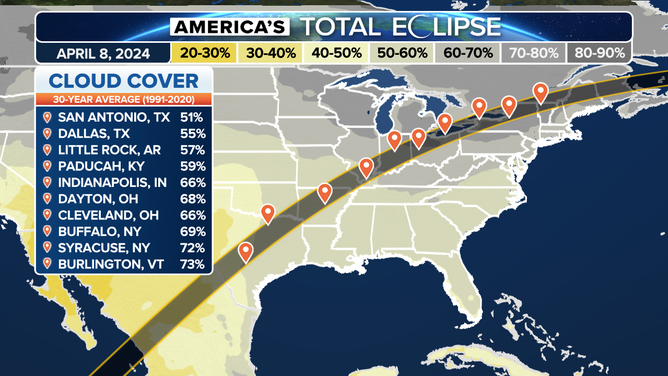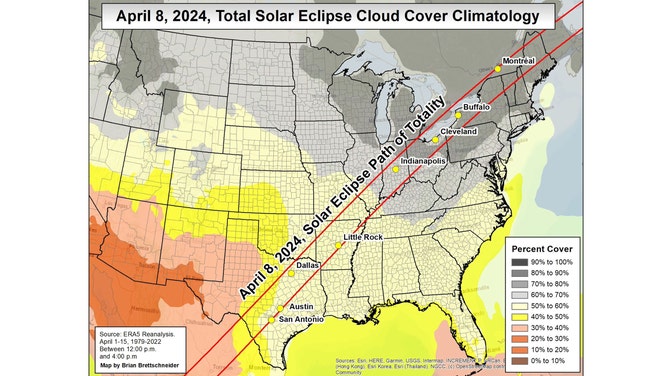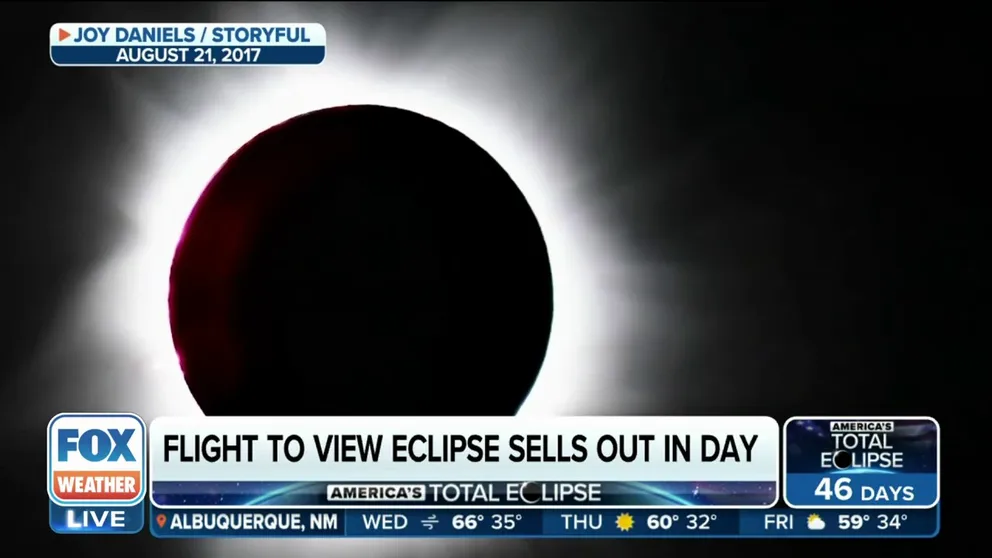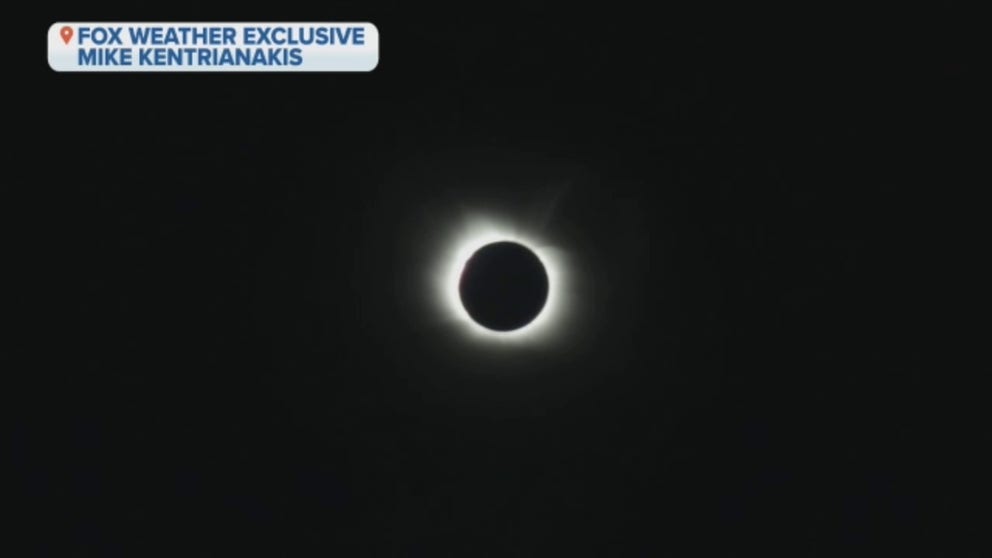Will weather cooperate for total solar eclipse in April?
Cloud coverage climatology over many years might provide some indication of where viewing conditions could be the most favorable.
Flight to view total solar eclipse sells out in day
Shadow lovers passionate about solar eclipses have sold out a special Delta Air Lines flight departing on April 8 from Austin to Detroit, allowing passengers to experience the path of totality for as long as possible, a spokesman for Delta confirmed to FOX Weather. The flight was completely booked on Tuesday, just one day after news of the special flight was announced.
We're less than two months away from the complete shadow of the Moon being cast over a large portion of North America during the Great North American Solar Eclipse on April 8, but the question on everyone's mind is: Will the weather cooperate for viewing this rare sight?
The total solar eclipse in 2024 will take place in the afternoon as it begins in Mexico and slices across Texas and 14 other U.S. states before exiting through the Canadian Maritimes.
Cities along the path of totality are already planning events and large watch parties to ring in the Great North American Solar Eclipse that will last just a couple of minutes in any given location.

Average cloud cover for the path of totality.
(FOX Weather)
Against all odds, a limited part of the U.S. that consists of southeastern Missouri, western Kentucky and southern Illinois will be in store for their second total solar eclipse in less than a decade since they also experienced totality during the Great American Solar Eclipse of Aug. 21, 2017.
WHO WILL BE ABLE TO SEE THE APRIL 2024 TOTAL SOLAR ECLIPSE?
The American Astronomical Society says that any given spot on the planet only sees temporary darkness from the Moon’s shadow once every 400 years.
Where is best place to view total solar eclipse without clouds getting in the way?
Long-range forecasts don't quite extend that far out in time, but cloud coverage climatology over many years might provide some indication of where viewing conditions could be the most favorable.
Dr. Brian Brettschneider, an Alaska-based climatologist, compiled the following map, which shows the average cloud coverage during an early-April afternoon based on 44 years of data from 1979 to 2022.

The various colors indicate the average cloud coverage between 12 p.m. and 4 p.m. EDT between April 1 and 15 based on ERA5 data from 1979 to 2022 collected by the European Centre for Medium-Range Weather Forecasting (ECMWF).
(Dr. Brian Brettschneider)
The climatology data indicate clouds are more likely to get in the way along northern portions of the eclipse's path, while southern areas tend to have a clearer sky at the time of year coinciding with the eclipse.
Cities such as Austin and San Antonio in Central Texas, which will be situated along the path of totality on April 8, average about 50% cloud coverage on an early-April afternoon.
Astronomer captures total solar eclipse on airplane
Amateur astronomer Mike Kentrianakis discusses in a FOX Weather exclusive interview being able to film the path of totality over the South Atlantic ocean.
Meanwhile, the sky is typically 60% to 70% filled with clouds at the same time in places like Cleveland and Buffalo, New York, also along the path of totality for the upcoming Great North American Solar Eclipse.
WATCH OUT FOR THESE ASTRONOMICAL EVENTS IN 2024
According to a March 2015 blog post written by Brettschneider, April is the sixth-cloudiest month of the year on average for the Lower 48 states.
But it's important to keep in mind that these are simply average amounts of cloud coverage, and the weather doesn't always abide by what it's "supposed" to do.
A low-pressure system could potentially sweep across Texas and disrupt viewing conditions with clouds and rain in the state that favors the clearest skies along the path of the eclipse. Or high pressure might park itself over the northeastern U.S. and bring a clear day to the areas most likely to have stubborn cloud coverage in early April.
The exact forecast details such as the amount of cloud coverage won't be known until the total solar eclipse is about a week away. But the good news is that you can get some early predictions for locations along the path of totality using the FutureView feature inside your FOX Weather app. Simply click the "Events" tab to track the weather for events up to nearly one year in advance. Click here to learn how to take advantage of this powerful tool.
If the weather doesn't cooperate for this rare event in April, the next total solar eclipse visible from the U.S. will happen on Aug. 12, 2045.

